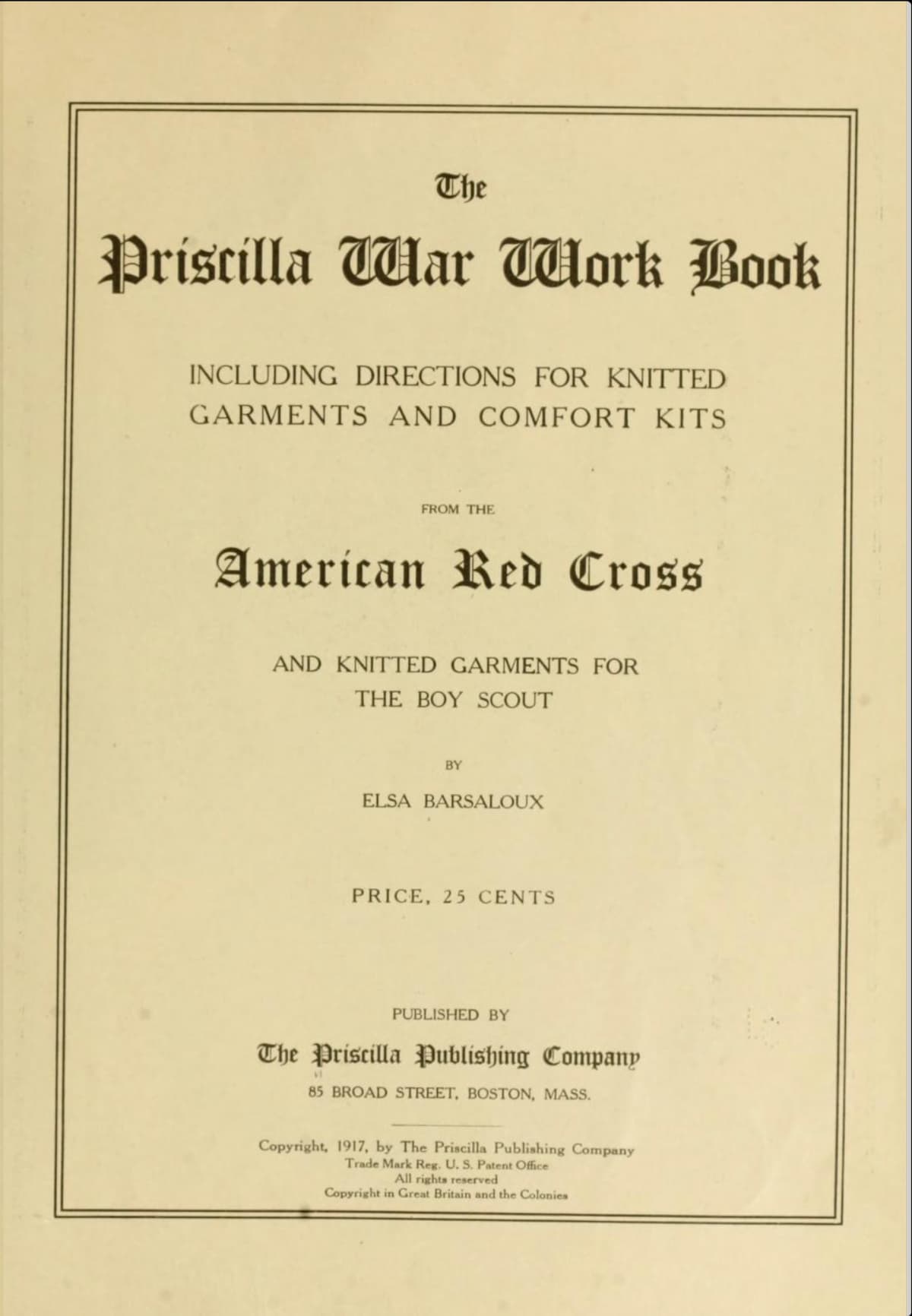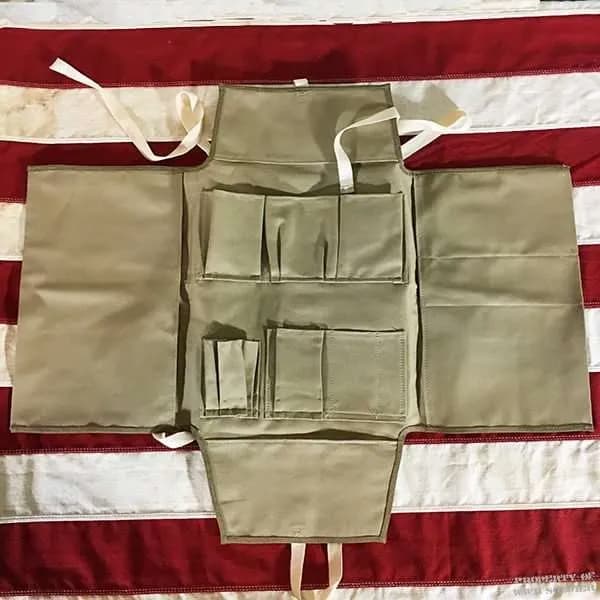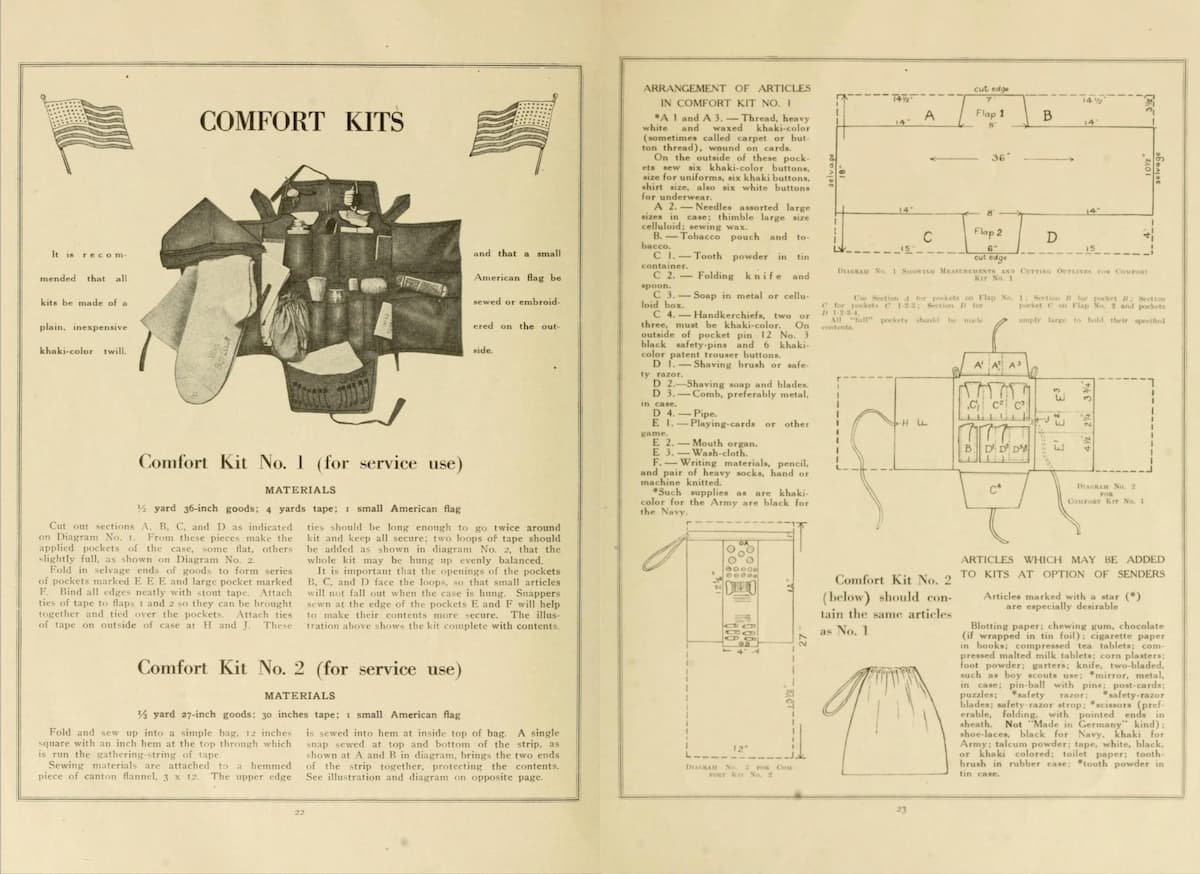We were looking at knitting books on Archive.org and found an interesting one from the WWI era. After descriptions and patterns for vests and balaclavas and scarves and all sorts of things to keep Our Boys warm and toasty at the front, we found a description of the Red Cross Comfort Kits Nos. 1, 2, and 3.

Title page

Comfort Kit No. 1
Comfort Kit No. 1 was made of khaki-coloured twill and had pockets to hold useful things. Detailed directions are given for needles and thread (sew varieties of buttons on the outside, please), tobacco pouch and tobacco, tooth powder, a folding knife, soap in a box (metal or celluloid), handkerchiefs in khaki colour (safety pins on the outside, please), shaving soap and a brush, a metal comb, a pipe, playing cards, writing materials, a washcloth, and just towards the end, in pocket E2, a mouth organ.

Comfort Kits
All of this goes in the gusseted pockets or gets attached to the flaps. The whole bundle gets rolled up and tied together for handy service use. If you can’t manage the flaps for the roll, there are directions for Comfort Kit No. 2, a small bag with a place for the sewing materials (Diagram No. 3).
More details about the articles are in the bottom right corner. The scissors, for example, should be folded and in a sheath, but should not be the ‘“Made In Germany” kind.’
Comfort Kit No. 3, for hospital use, has many of the same supplies, but there’s a special note, in bold, on the bottom left of what must be omitted from this kit: no candy, no sharp instruments such as knives or scissors, and no MOUTH ORGAN!

Comfort Kit No. 3
And please don’t forget to sew a small American flag on the outside.
Since this was a publication made with the help of the Red Cross, we can only assume that harmonicas in the hospital were considered as dangerous as sharp objects or sweets for the sick and recovering.
Heitor Villa-Lobos: O canto do cisne negro (arr. R. Bonfiglio for harmonica and orchestra) (Robert Bonfiglio, harmonica; New York Chamber Symphony; Gerard Schwarz, cond.)
The harmonica, which the player Robert Bonfiglio described as ‘the instrument one plays closest to one’s brain other than one’s voice’, was used in this recording to substitute for the cello in Villa-Lobos’ 1917 composition O canto do cisne negro (Song of the Black Swan).
In an article in an Iowa newspaper from 7 July 1917, which was surveying what the soldiers would like in their comfort kits, an officer in the censor’s office, who read all mail from the front said: ‘Jam at the holidays, harmonicas or mouth organs, razors, and socks seem to be the thing that the boys write home for mostly.’ The Red Cross guide seems to have had ready followers!
Soon after the start of the war, Comfort Kits could be bought commercially, some in leather, but in the end, everyone wanted a bit of music and warm feet.
For more of the best in classical music, sign up for our E-Newsletter
